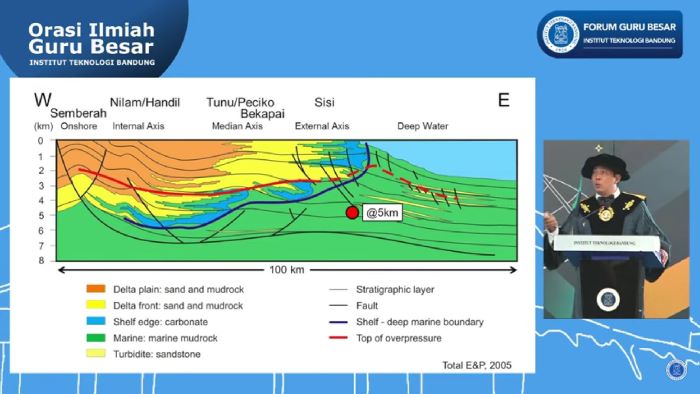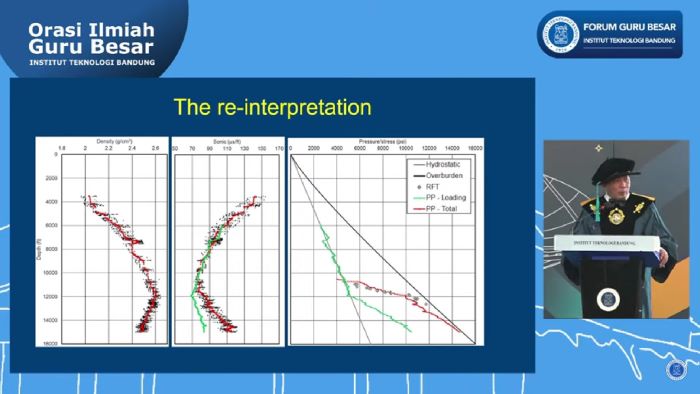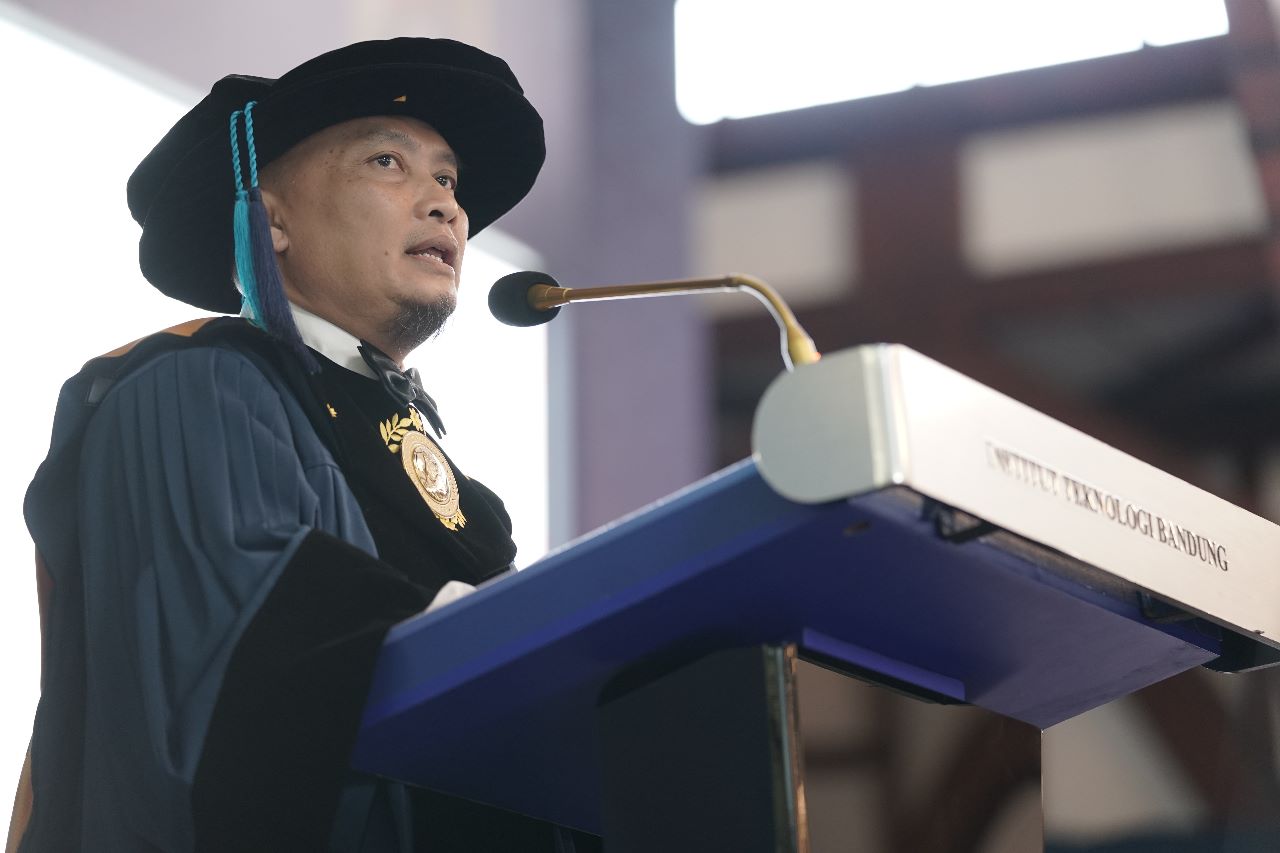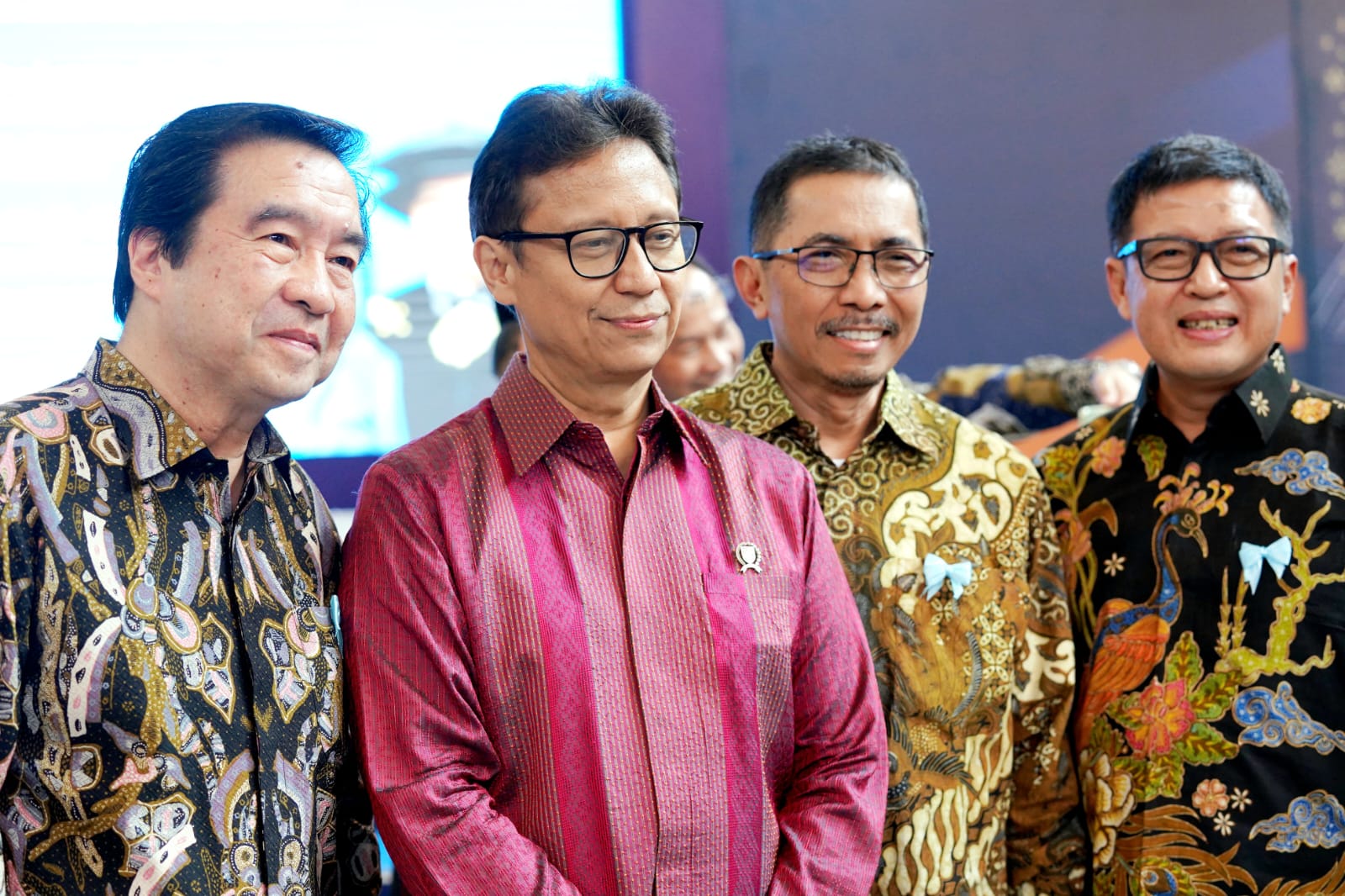Prof. Agus Mochamad Ramdhan's Scientific Oration: Tackling Challenges with Reinterpretations in Research
BANDUNG - itb.ac.id - The Professors Forum of Institut Teknologi Bandung (ITB) held a series of scientific orations on 27 January 2024. The event was conducted offline at the West Hall of ITB Ganesha Campus. One of the five professors present to deliver their oration was Prof. Agus Mochamad Ramdhan, S.T., M.T., Ph.D.
Prof. Agus’ educational background is geological engineering from the hydrogeology research group. Beside being active in academics, Prof. Agus is also known from his YouTube channel, AMR SoT. With 2000 and more subscribers, Prof. Agus continues to leverage YouTube as a platform to share knowledge about groundwater with the public.
“Groundwater is the main source to fulfill the needs of drinking water (67%) of the Indonesian people,” he asserted.
Prof. Agus had been involved in hydrogeology for 14 years. Hydrology had also led him to publish a 200-page scientific book and hold various titles, including the professor title. Prof. Agus delivered an oration on that very topic, entitled “Overpressure Hydrogeology and Hydrogeology in a Broader Sense in Indonesia”. The materials presented in this oration came from Chapter 4 of his own book, which focused on overpressures in the Kutai Basin.
Earth is one of the planets that contain life-supporting elements, one of which is water. Through seismic wave propagation, it was ascertained that the radius or depth of Earth is around 6,371 km. Prof. Agus explained one of the phenomenal research projects in 1970, the Kola Project, aimed to penetrate Earth yet fell short of ‘only’ 12.3 km deep. Surprisingly, what was found at such a depth was groundwater.
Prof. Agus began his research when he studied at Durham University in 2007. His research focused on groundwater pressure, more specifically overpressure. It originated from new ideas that could be developed from well-drilling studies in Indonesia. He stated that Indonesia had a long history of performing the most challenging well-drilling operations since the 1970s until now. The Kutai Basin then became the primary scope of his research.
Groundwater pressure can be hydrostatic if it is situated at a relatively shallow depth (30 liters/second) or in overpressure at a deeper depth. Overpressure is a hydrogeology phenomenon observed when water rises above the surface, which can reach up to 4–5 km in height.
Overpressure can be caused by a loading mechanism or fluid expansion. A loading mechanism occurs when pressure on the surface increases constantly but the sediment layer fails to settle, resulting in leakage as water struggles to flow out naturally. On the other hand, fluid expansion is the sudden increase in fluid that occurs in the sediment layer.
The occurrence of overpressure in the Kutai Basin began at a depth of 2 km. Prof. Agus revealed that all previous researchers agreed that the main cause of this overpressure was the loading mechanism generated by the Mahakam River. However, he and his research supervisor, Neil. R. Guilty, found that fluid expansion was actually the root of the problem; they did not find any evidence whatsoever to suggest loading was the cause.

“My joint research with my professor was published in the prestigious AAPG Bulletin journal in 2011. However, we later faced harsh criticism for contradicting earlier researchers,” he said.
Although heavily criticized, Prof. Agus remained steadfast in defending the results of his research. In 2011, Prof. Agus reinterpreted the research by adding physical elements to his analysis, and he found out that there were loading and fluid expansion factors at play in the Kutai Basin.
Prof. Agus then tried to separate the two factors by quantifying them. He concluded that both loading and fluid expansion caused the overpressure phenomenon in the Kutai Basin, with the latter being more dominant than the former. This discovery was proven by a formula he created using a physical approach. It was determined that loading only took effect at a much deeper depth and contributed little to the overall phenomenon.

This reinterpretation allowed Prof. Agus to write six different papers and receive multiple awards, proving that results will never betray the process.
“We have to be humble when it comes to Mother Earth as there is still a lot of science down there to explore,” he concluded.
Reporter: Pravito Septadenova Dwi Ananta (Geological Engineering ‘19)
Translator: Ariq Ramadhan Teruna (Chemical Engineering ‘21)
Editor: Ayesha Lativa Mafaza (Postharvest Technology ‘21)

scan for download





